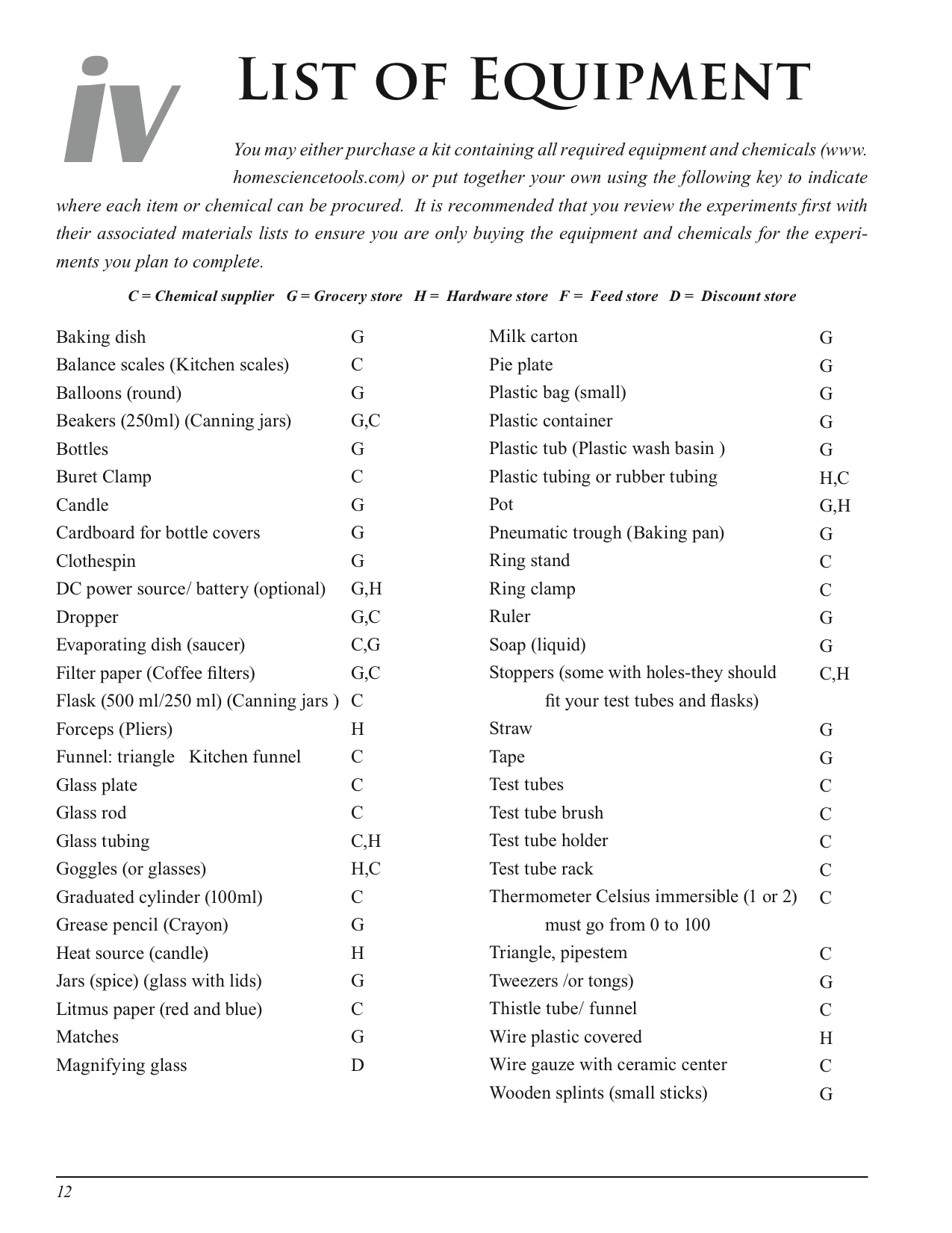Description
This Chemistry lab manual is designed for use by a high school chemistry student. It can be paired with any chemistry text you are using. Typically a high school chemistry text might come with a lab manual of its own. So why would you want to use this one? Our lab manual was designed to run quality, real science labs, with equipment and chemicals you may already have or can easily acquire. If you can run an acid experiment and accomplish the same objective with vinegar rather than sulfuric acid, then why not? It is much simpler, cheaper, and easier to dispose of chemical byproducts afterwards. If you can run an experiment with mason jars and your stove rather than an alcohol burner and a beaker, why not?
This is not to say that a chemistry student, especially one who is college bound, shouldn’t know their way around a lab. They should. We encourage you to set up as much equipment as you can afford, but substitute as required. The book offers guidelines for that. (And contact me if you have questions, I will try to answer them in a timely fashion, as I am probably teaching a chemistry lesson to my own students when you have your question!) You will probably want to have a ring stand, an alcohol burner, some chemicals, test tubes….. but check the labs first and assemble a list of what you need to acquire. There’s no ready made kit for this book. You won’t do all the experiments. You’ll pick 12-15, or maybe one per chapter of your text, and get the materials you’ll need for those. (We recommend Home Science Tools for items you can’t find at the grocery store, hardware store, or around your house)
I have paired this book with a commonly used homeschool text in the past few years. I bought their lab manual and ran a few of their labs, but I pulled out labs from Experiences in Chemistry when we needed something simpler, faster, and easier to conduct, while still accomplishing the same lab objectives. I have seen a single lab from our curriculum book cost over $100 in chemicals and equipment! So with the other lab manual, I had to make specific molarity solutions of hydrochloric acid…. you won’t see that here. With the other book it called for about 9 iterations of the same process with different chemicals. That won’t happen with this book. Simpler, same objectives.
Ok so what is in the book? 36 labs covering topics such as change of state, the ideal gas law, density, titration, production of a gas, and reaction rates. Check out the table of contents pages included to see the experiments and how they might pair with your text.
Answer key is in the back of the book for the quantitative and qualitative lab questions. Guide to how to set up a lab notebook and write a lab report is in the front.
Time to tackle high school chemistry lab!







Reviews
There are no reviews yet.